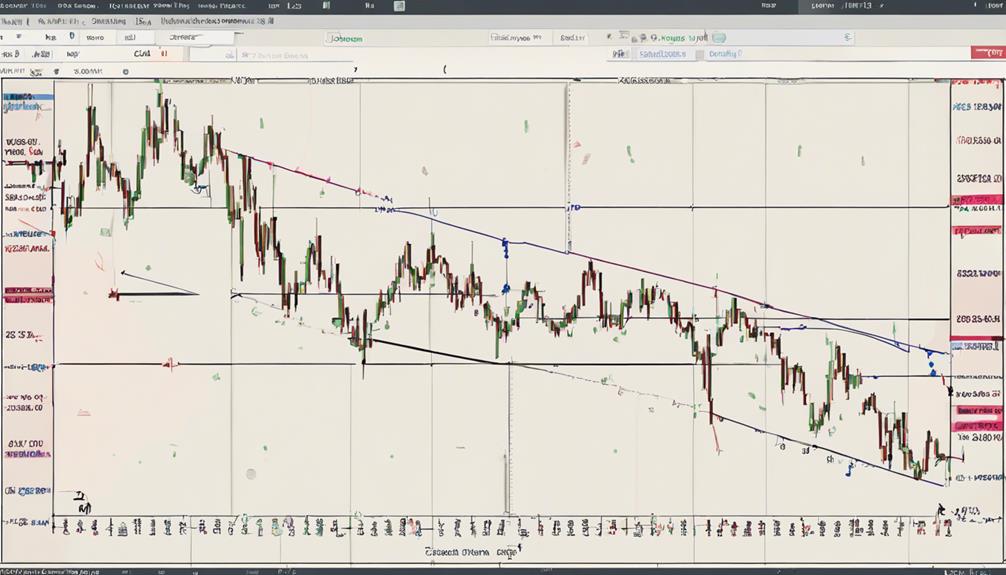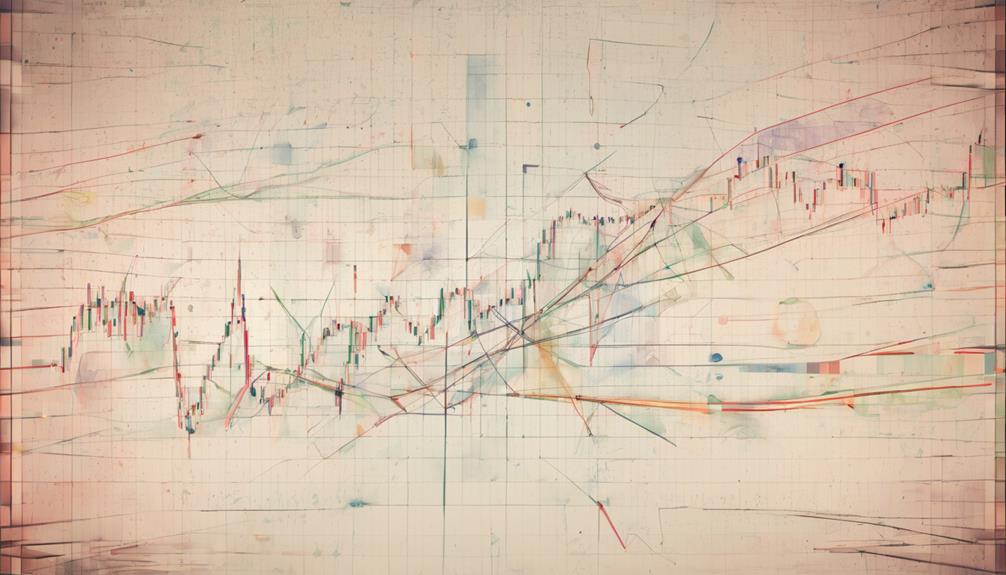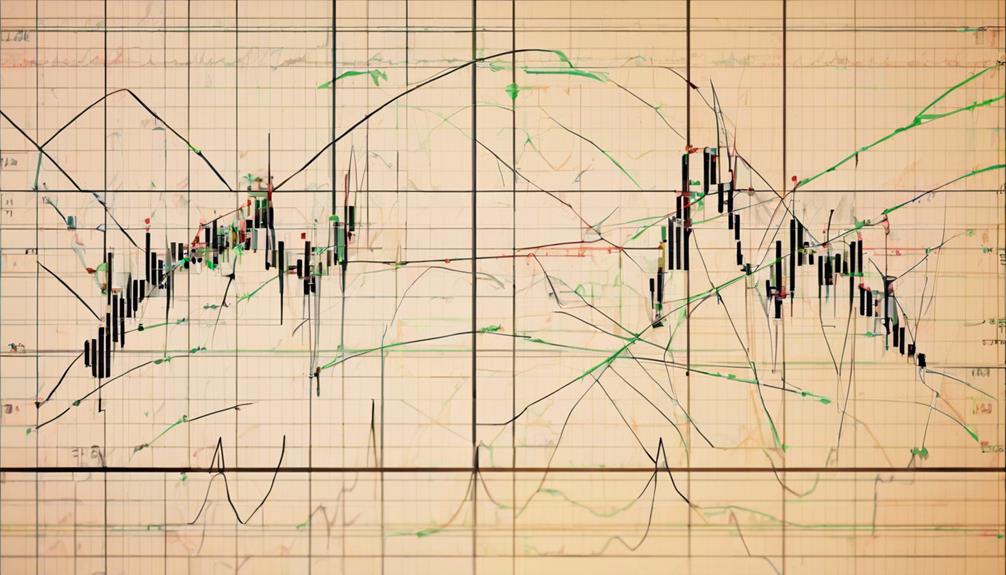Within the realm of technical analysis, Gann Theory stands as a formidable methodology that has intrigued traders for decades. The concept of using geometric shapes and angles to forecast market movements may seem unconventional, yet the success stories stemming from this approach cannot be ignored.
As traders seek to gain an edge in deciphering the complexities of financial markets, understanding and applying Gann Theory could potentially provide a unique perspective that enhances decision-making processes. With its blend of mathematical precision and market psychology, grasping the intricacies of Gann Theory may offer a pathway to unlocking hidden opportunities in the ever-evolving world of trading.
Gann Theory Fundamentals
Gann Theory Fundamentals serve as the cornerstone for understanding the principles and methodologies devised by W.D. Gann in the early 1900s to anticipate future price movements in financial markets through the analysis of geometric patterns and mathematical relationships.
Gann Theory integrates the concepts of time and price, emphasizing the importance of both factors in market analysis. By studying historical price movements, traders utilizing Gann Theory can identify potential levels of support and resistance, crucial for making informed trading decisions.
This theory revolves around the idea that price movements are not random but follow distinct trends and cycles that can be predicted through careful analysis. Gann angles, such as the 1×1 angle, are instrumental in determining the slope of a trend and locating potential turning points in the market.
Mastering Gann Theory empowers traders with a structured approach to analyzing market behavior, enabling them to forecast price movements with a high degree of accuracy.
Gann Angles Explained

Derived from the relationship between price and time, Gann angles are instrumental tools in technical analysis for identifying critical support and resistance levels in financial markets. These angles, created based on the price to time ratio, offer predictive lines that aid traders in determining potential market movements.
Among the various Gann angles, the 1×1 Gann angle holds particular significance as it represents a 45-degree angle on the chart, symbolizing equilibrium. By analyzing the slope insights of Gann angles, traders can gain valuable information on trend direction and strength, enabling them to anticipate potential market movements with greater accuracy.
Understanding how Gann angles interact with price levels allows traders to effectively identify key support and resistance levels, providing a structured approach to analyzing market dynamics and making informed trading decisions. Overall, Gann angles serve as a powerful tool for traders seeking to navigate market trends and capitalize on opportunities presented by price movements.
Applying Gann Theory in Trading

Utilizing Gann Theory in trading requires a comprehensive understanding of how to apply Gann angles effectively to predict and analyze future price movements with precision and insight.
Traders can harness the power of Gann Theory by studying patterns using price theory and Gann time to track stock price movements accurately. This approach not only aids in predicting investor activity but also helps in foreseeing potential stock reversals, enabling traders to make informed decisions.
By delving into the intricacies of Gann Angles and their application, traders can identify key support and resistance levels crucial for navigating the market with confidence.
Additionally, applying Gann Theory in trading involves the strategic combination of angles with horizontal lines to determine market trends and anticipate possible reversals, providing traders with a holistic view of the market landscape.
This methodical application of Gann Theory equips traders with essential tools to interpret stock price movements effectively and stay ahead of market fluctuations.
Gann Trading Strategies

Drawing on the foundational principles of technical analysis, Gann trading strategies leverage geometric patterns and time cycles to forecast future price movements with precision and strategic insight. By utilizing Gann angles, traders can accurately predict price movements and identify key support and resistance levels essential for making informed trading decisions.
These strategies not only help in understanding market trends but also in predicting potential reversals by analyzing geometric patterns and time cycles. Moreover, by incorporating planetary aspects and lunar phases into their analysis, traders can enhance the forecasting accuracy of their Gann trading strategies.
Practical case studies further demonstrate the effectiveness of Gann tools in enabling traders to execute well-informed trades based on market fluctuations. Overall, Gann trading strategies offer a comprehensive framework for traders to analyze market dynamics and make strategic decisions based on a combination of technical analysis principles and unique forecasting methods.
Practical Gann Theory Applications

Practical applications of Gann Theory offer traders a systematic approach to analyzing market dynamics and making well-informed trading decisions based on a combination of technical analysis principles and unique forecasting methods.
- Predicting Market Trends: Traders utilize Gann angles and trend lines to forecast potential market trends accurately.
- Identifying Support and Resistance Levels: Gann Theory helps traders pinpoint crucial support and resistance levels, aiding in strategic decision-making.
- Price and Time Forecasting: By studying price patterns and time movements, traders can anticipate stock value reversals effectively.
Gann Theory enables traders to delve into intricate market movements, combining price theory, time study, and pattern analysis for a comprehensive market evaluation. Understanding and implementing Gann Theory provide insights into stock price behavior, empowering traders to identify potential market reversals and make informed trading choices. By incorporating Gann Theory into their technical analysis toolkit, traders can enhance their ability to navigate the dynamic landscape of financial markets with more confidence and precision.
– What Are the Key Differences Between Grasping Gann Theory and Advanced Gann Theory?
Grasping Gann Theory involves understanding the basic principles of market movements, while Advanced Gann Theory delves deeper into complex technical analysis methods. Both aim to predict market trends, but Advanced Gann Theory technical analysis utilizes more intricate tools to refine trading strategies and forecast price movements with greater precision.
Frequently Asked Questions
How Accurate Is Gann Theory?
Gann Theory demonstrates notable accuracy, with predictions reaching up to 90%. Its reliance on geometric shapes and time cycles provides a systematic approach to understanding market movements. Traders benefit from precise support/resistance levels and trend reversal insights.
What Is Gann Technical Analysis?
Gann technical analysis is a method used to predict future price movements by utilizing geometric shapes and angles. Developed by W.D. Gann, it helps traders forecast market trends, identify support and resistance levels, and make informed trading decisions.
What Is the 50 Percent Rule in Gann?
The 50 percent rule in Gann Theory signifies a retracement level observed after a substantial price movement. This level suggests a potential continuation of the initial trend. Traders use it to gauge trend strength and identify entry/exit points.
What Is the 9 5 Gann Rule?
The 9 5 Gann Rule in trading suggests being active for 9 months and inactive for 5 to align with market cycles. This strategy aims to enhance returns, reduce risks, and prevent overtrading. By respecting seasonal patterns, traders optimize performance.
Conclusion
In conclusion, the mastery of Gann Theory offers traders a powerful tool to analyze and predict market trends with precision. By incorporating Gann angles and understanding the cyclical nature of financial markets, traders can make informed decisions to maximize their profits.
While some may argue that Gann Theory is complex and requires a deep understanding of technical analysis, the potential rewards of accurately predicting market movements outweigh the initial challenges of mastering this methodology.
